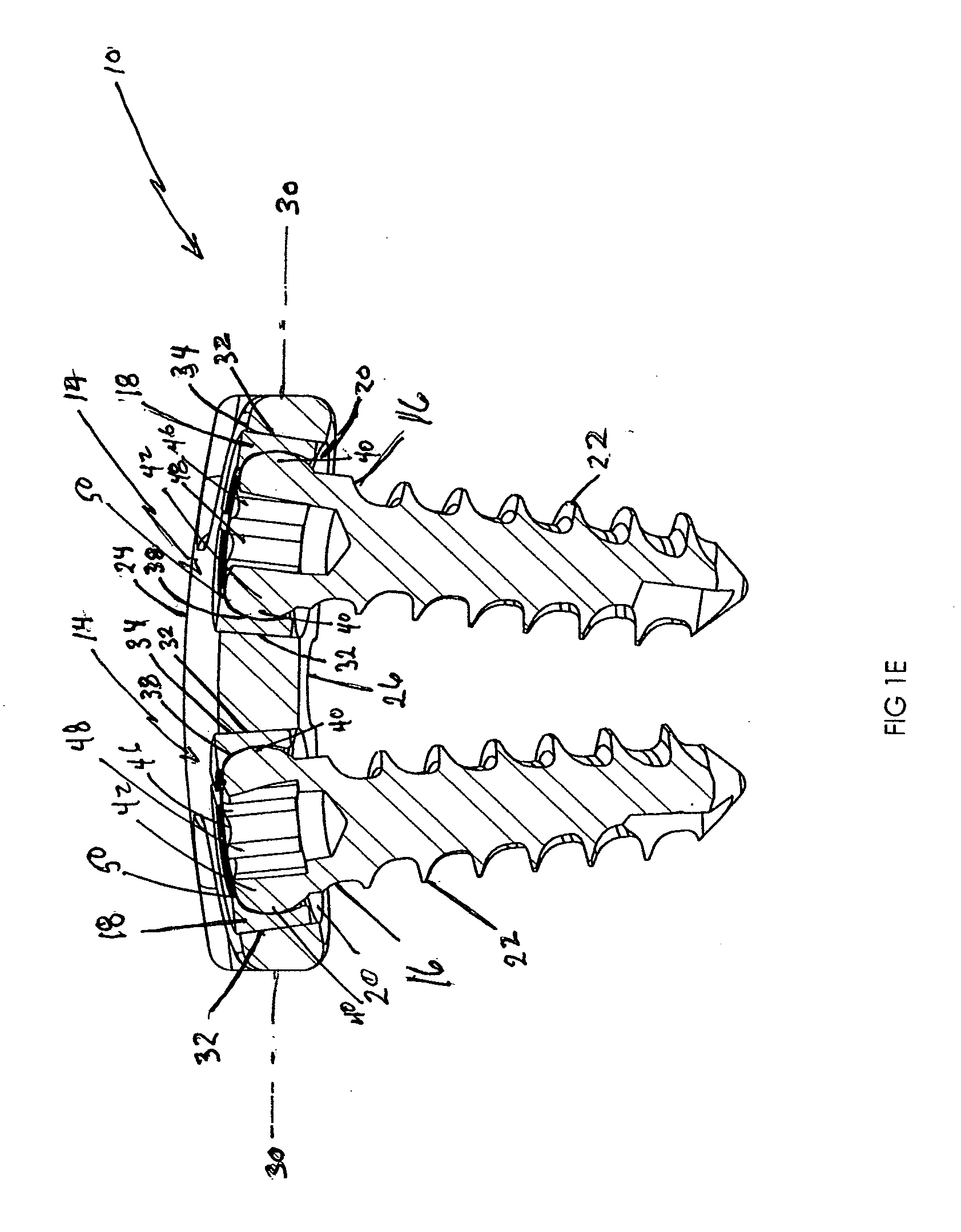Anterior vertebral plate with taper lock screw
a technology of taper lock screw and anterior vertebrae, which is applied in the field of devices and methods for use in orthopedic spine surgery, can solve the problems of plates which do not secure the screw relative to the plate, are virtually gone from use, and are susceptible to having the screws back ou
- Summary
- Abstract
- Description
- Claims
- Application Information
AI Technical Summary
Benefits of technology
Problems solved by technology
Method used
Image
Examples
Embodiment Construction
[0027]Detailed embodiments of the present invention are disclosed herein; however, it is understood that the following description and each of the accompanying figures are provided as being exemplary of the invention, which may be embodied in various forms without departing from the scope of the claimed invention. Thus, the specific structural and functional details provided in the following description are non-limiting, but serve merely as a basis for the invention as defined by the claims provided herewith. The device described below can be modified as needed to conform to further development and improvement of materials without departing from the inventor's concept of the invention as claimed.
[0028]The device, as generally shown at 10 in FIG's 1A-E is a low profile anterior vertebral body plate 12 that, when implanted in a patient can be secured to the underlying bone using novel taper lock screw assemblies, which are generally shown at 14 in FIGS. 1A-E and 2A-F and include a thr...
PUM
 Login to View More
Login to View More Abstract
Description
Claims
Application Information
 Login to View More
Login to View More - R&D
- Intellectual Property
- Life Sciences
- Materials
- Tech Scout
- Unparalleled Data Quality
- Higher Quality Content
- 60% Fewer Hallucinations
Browse by: Latest US Patents, China's latest patents, Technical Efficacy Thesaurus, Application Domain, Technology Topic, Popular Technical Reports.
© 2025 PatSnap. All rights reserved.Legal|Privacy policy|Modern Slavery Act Transparency Statement|Sitemap|About US| Contact US: help@patsnap.com



